This collection of American White Pelican photos were taken starting the 6th of April. Some of the images show the snow from a snowstorm earlier this month. I’ve had a busy month so far but I still wanted to share these photos.
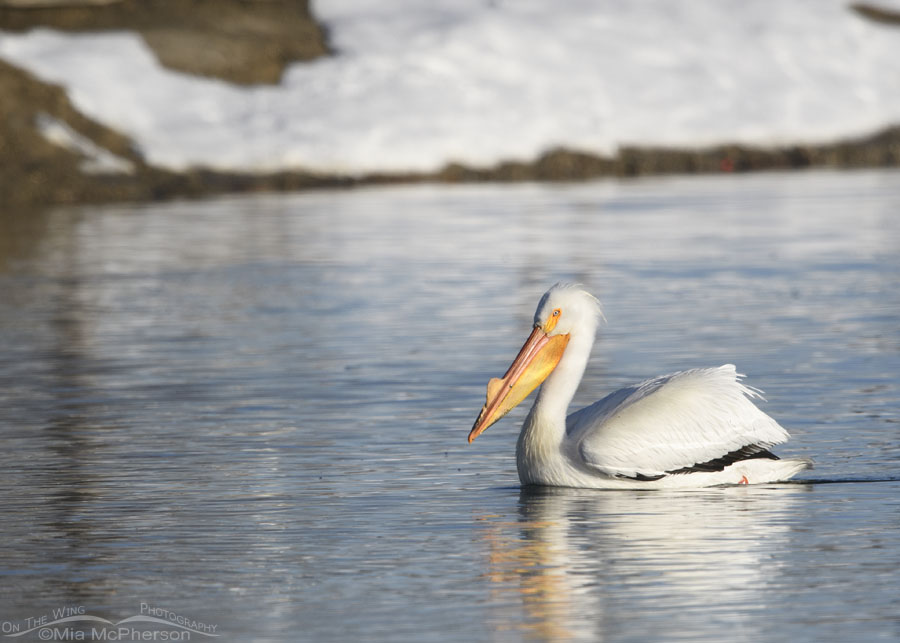 American White Pelican after a spring snowstorm – Nikon D500, tripod mounted, f7.1, 1/2500, ISO 500, Nikkor 500mm VR with 1.4x TC, natural light
American White Pelican after a spring snowstorm – Nikon D500, tripod mounted, f7.1, 1/2500, ISO 500, Nikkor 500mm VR with 1.4x TC, natural light
For my friends in warmer climates, it might seem strange to see these large American White Pelicans with snow included in the images. It isn’t unusual to see snow and these large, white pelicans in the same frame in northern Utah. The pelicans often return here to their breeding grounds before the ice is off all of the waters.
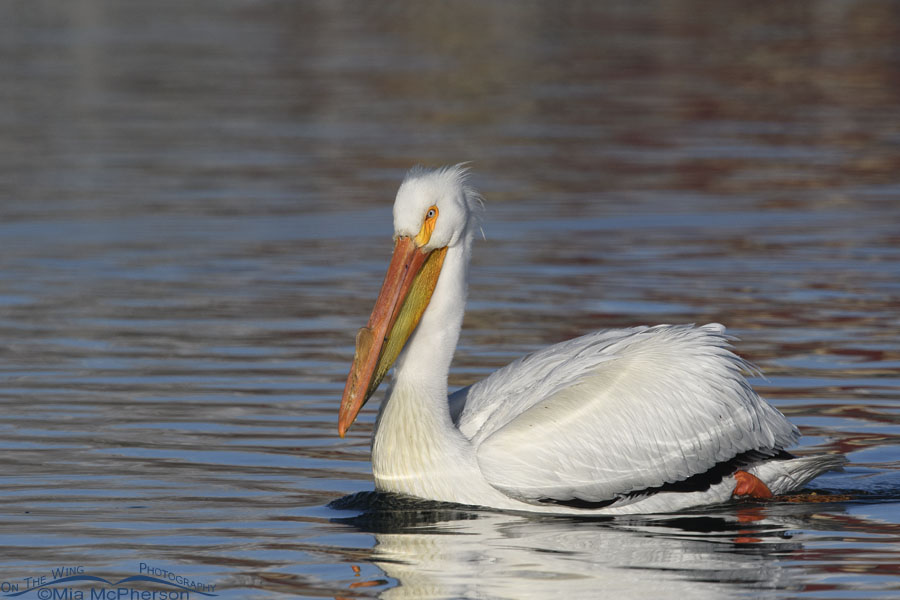 American White Pelican after daybreak – Nikon D500, tripod mounted, f9, 1/3200, ISO 500, Nikkor 500mm VR with 1.4x TC, natural light
American White Pelican after daybreak – Nikon D500, tripod mounted, f9, 1/3200, ISO 500, Nikkor 500mm VR with 1.4x TC, natural light
When the pelicans return to northern Utah, I can’t resist photographing them. I don’t even try to. Why would I? They are a fascinating species that I am fortunate to see for a large portion of the year.
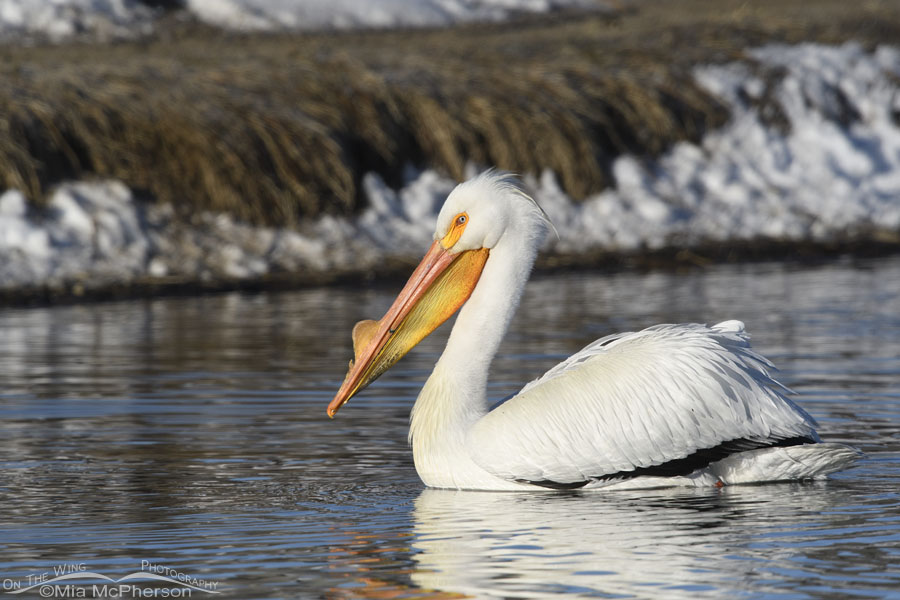 American White Pelican with snow in the background – Nikon D500, tripod mounted, f7.1, 1/3200, ISO 500, +0.3 EV, Nikkor 500mm VR with 1.4x TC, natural light
American White Pelican with snow in the background – Nikon D500, tripod mounted, f7.1, 1/3200, ISO 500, +0.3 EV, Nikkor 500mm VR with 1.4x TC, natural light
Photographing these American White Pelicans can be tricky because exposing big, white birds is an exposure challenge. If I blow out the whites then fine details can’t be seen, if I underexpose them, those white feathers can look dingy gray. Getting the exposure right in camera makes for the best images of these pelicans.
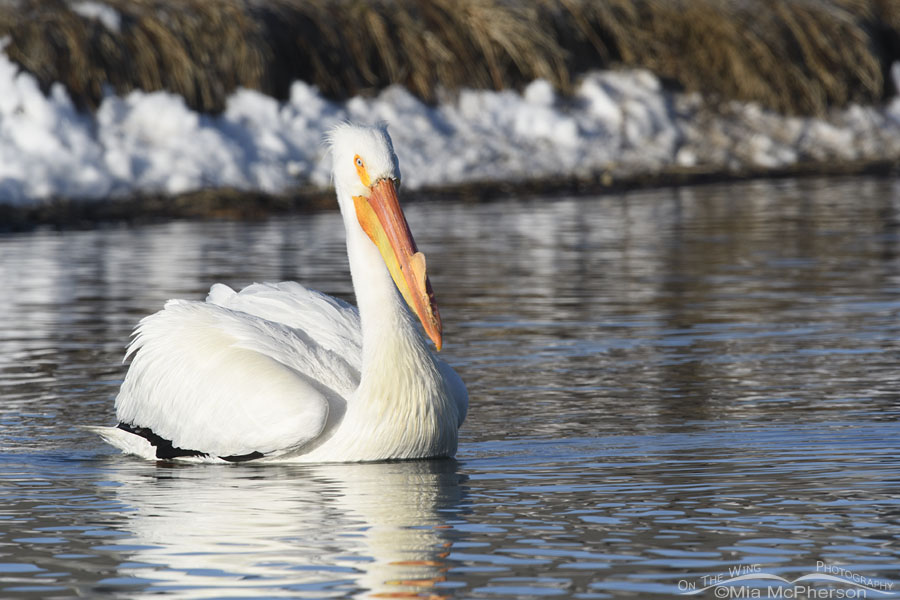 American White Pelican and snow covered shoreline – Nikon D500, tripod mounted, f9, 1/1600, ISO 500, +0.3 EV, Nikkor 500mm VR with 1.4x TC, natural light
American White Pelican and snow covered shoreline – Nikon D500, tripod mounted, f9, 1/1600, ISO 500, +0.3 EV, Nikkor 500mm VR with 1.4x TC, natural light
American White Pelicans might seem ungainly when they walk on land. In the water and air they are pure gracefulness.
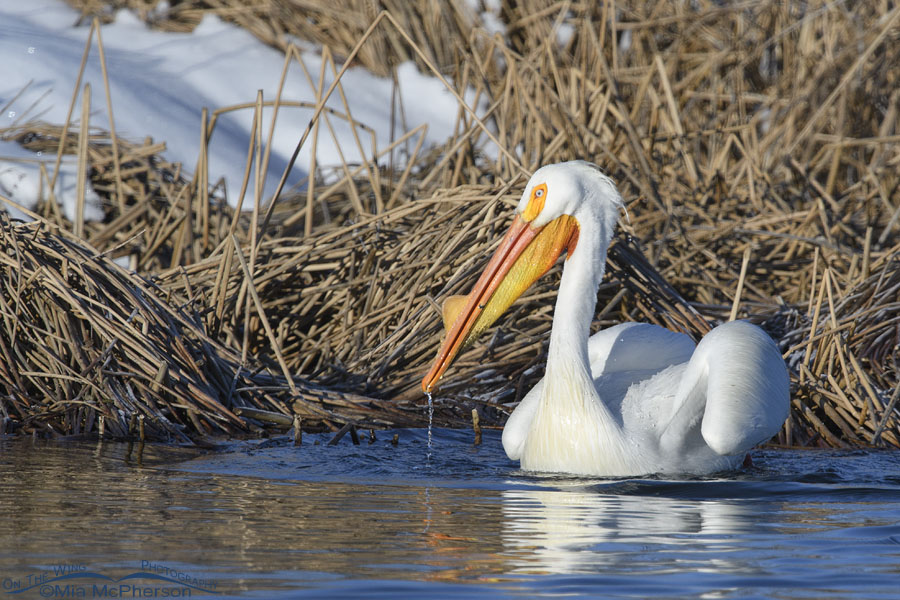 Adult American White Pelican on an early spring morning – Nikon D500, tripod mounted, f9, 1/1600, ISO 500, Nikkor 500mm VR with 1.4x TC, natural light
Adult American White Pelican on an early spring morning – Nikon D500, tripod mounted, f9, 1/1600, ISO 500, Nikkor 500mm VR with 1.4x TC, natural light
The pelicans can also be amusing. Their long bills, large pouches lend a bit of comedy to every interaction that I have with this species. At times, when I have them in my viewfinder, I can’t help but laugh.
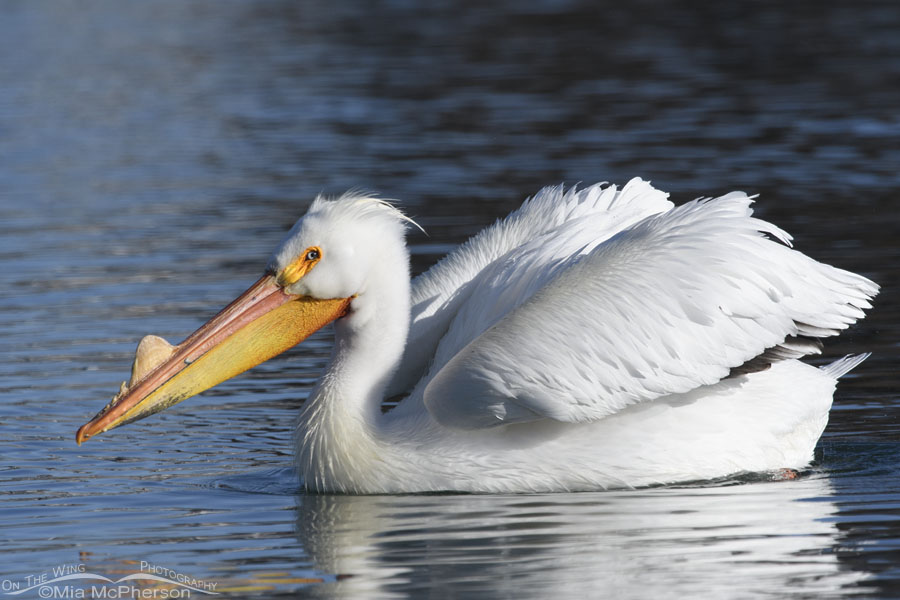 Urban American White Pelican up close – Nikon D500, tripod mounted, f9, 1/2000, ISO 500, +0.3 EV, Nikkor 500mm VR with 1.4x TC, natural light
Urban American White Pelican up close – Nikon D500, tripod mounted, f9, 1/2000, ISO 500, +0.3 EV, Nikkor 500mm VR with 1.4x TC, natural light
Most of the time though? I’m mesmerized by them. These pelicans are big and bulky and it amazes me that they they can lift off into the air.
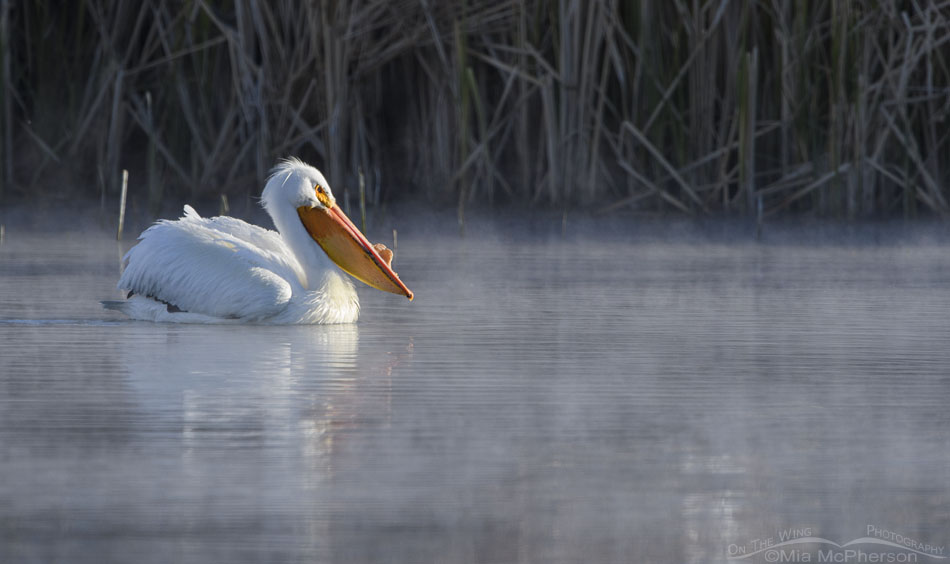 American White Pelican in a morning mist – Nikon D500, tripod mounted, f7.1, 1/800, ISO 500, +0.3 EV, Nikkor 500mm VR with 1.4x TC, natural light
American White Pelican in a morning mist – Nikon D500, tripod mounted, f7.1, 1/800, ISO 500, +0.3 EV, Nikkor 500mm VR with 1.4x TC, natural light
The morning I photographed this American White Pelican was cold, the water was warmer than the air above it which created a rising mist. I love getting photos of pelicans and other birds in a mist.
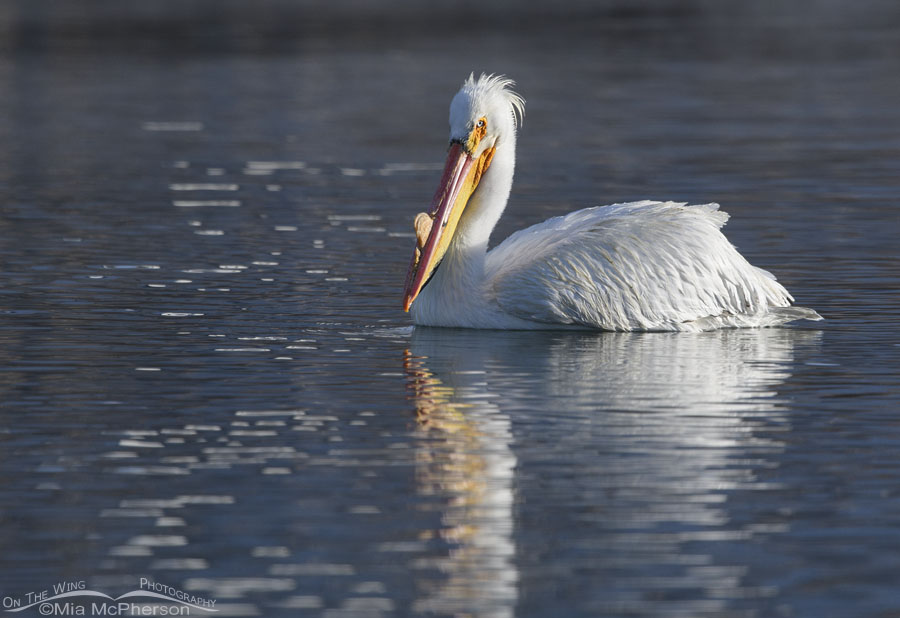 Early morning American White Pelican – Nikon D500, tripod mounted, f7.1, 1/1600, ISO 500, Nikkor 500mm VR with 1.4x TC, natural light
Early morning American White Pelican – Nikon D500, tripod mounted, f7.1, 1/1600, ISO 500, Nikkor 500mm VR with 1.4x TC, natural light
Just two minutes later I had another pelican in my viewfinder that was in front of the morning mist in the bright morning light. I liked that light on the pelicans feathers.
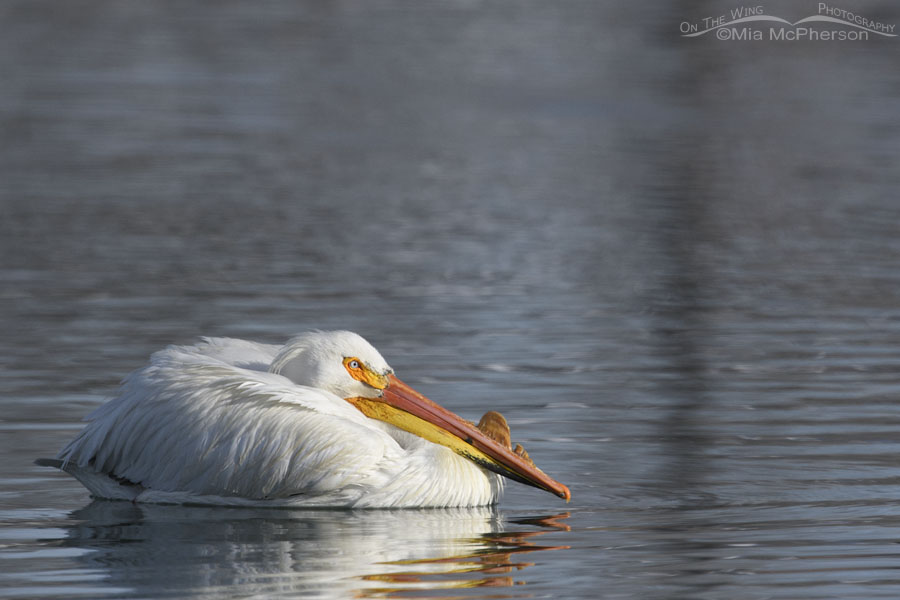 Spring American White Pelican on an urban pond – Nikon D500, tripod mounted, f7.1, 1/4000, ISO 500, Nikkor 500mm VR with 1.4x TC, natural light
Spring American White Pelican on an urban pond – Nikon D500, tripod mounted, f7.1, 1/4000, ISO 500, Nikkor 500mm VR with 1.4x TC, natural light
This American White Pelican riding low on the water caught my eye because of its posture and the texture of its soft white feathers. The zig-zag reflection of its bill was also eye-catching.
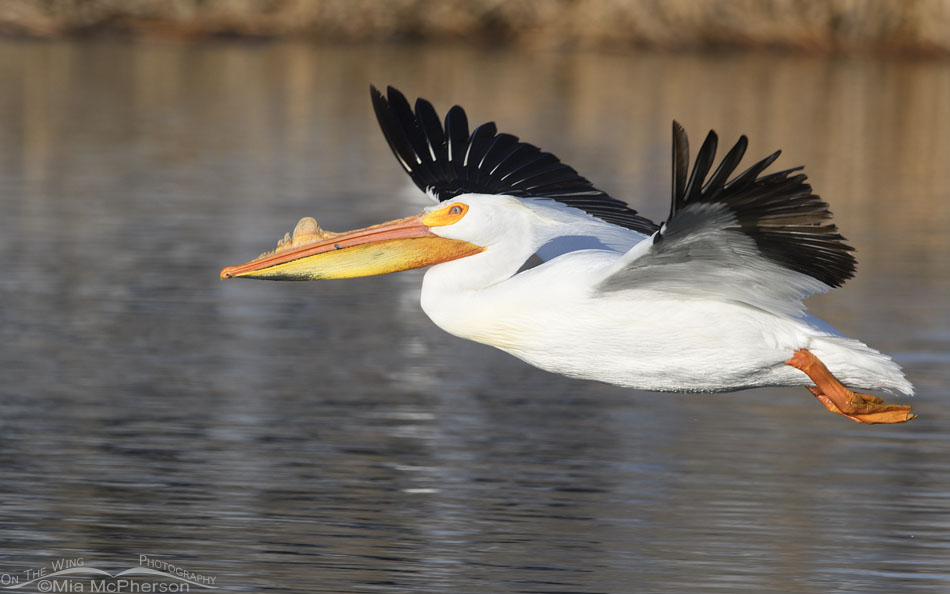 American White Pelican flying low over a pond – Nikon D500, tripod mounted, f8, 1/1600, ISO 500, +0.7 EV, Nikkor 500mm VR with 1.4x TC, natural light
American White Pelican flying low over a pond – Nikon D500, tripod mounted, f8, 1/1600, ISO 500, +0.7 EV, Nikkor 500mm VR with 1.4x TC, natural light
And when this pelican flew past me I felt like I had to photograph it in the soft morning light. They really are large birds and I barely fit this one into my viewfinder.
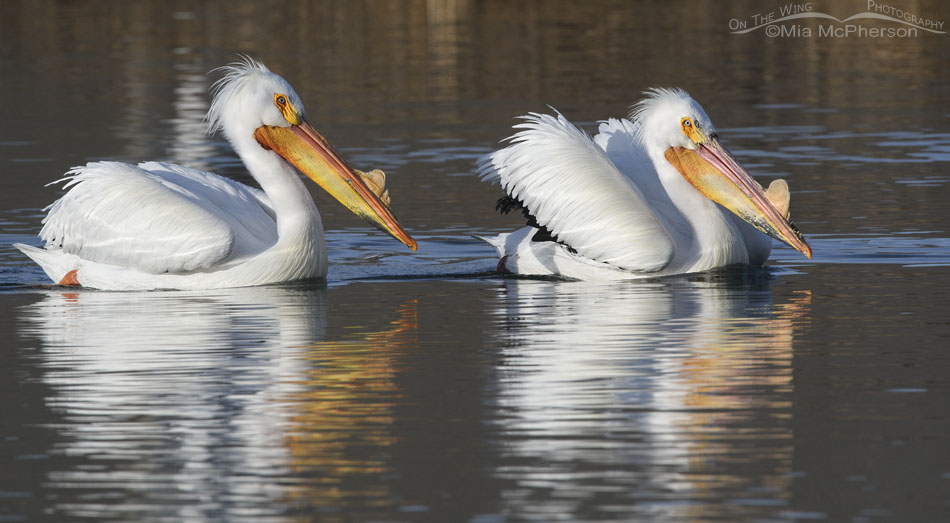 Two American White Pelicans swimming on a pond – Nikon D500, tripod mounted, f11, 1/800, ISO 500, Nikkor 500mm VR with 1.4x TC, natural light
Two American White Pelicans swimming on a pond – Nikon D500, tripod mounted, f11, 1/800, ISO 500, Nikkor 500mm VR with 1.4x TC, natural light
What is better than one American White Pelican?
Two of them floating along together.
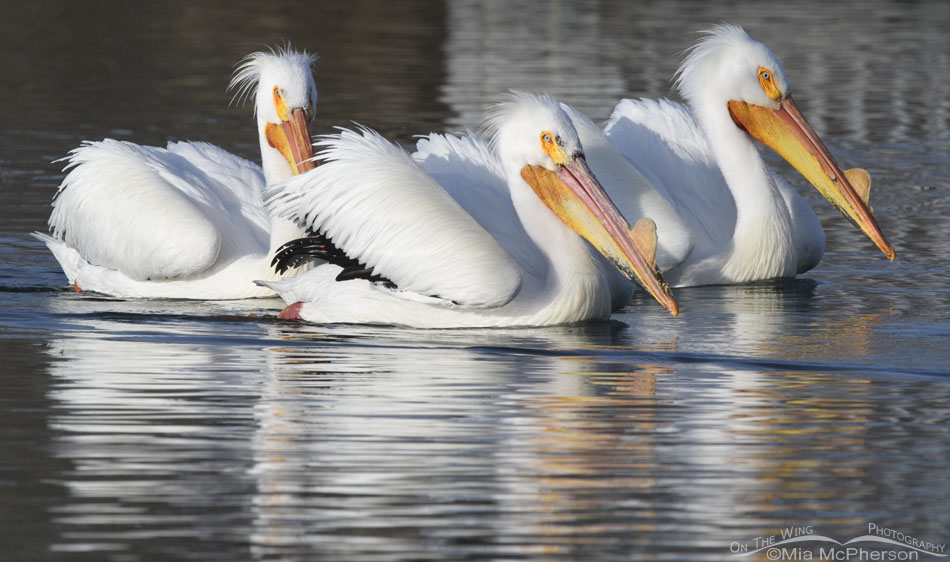 Three American White Pelicans side by side – Nikon D500, tripod mounted, f11, 1/800, ISO 500, Nikkor 500mm VR with 1.4x TC, natural light
Three American White Pelicans side by side – Nikon D500, tripod mounted, f11, 1/800, ISO 500, Nikkor 500mm VR with 1.4x TC, natural light
And if two pelicans are great, three are even better. This trio of pelicans were a joy to photograph.
Over the next several months I will have more opportunities to see and photograph these amazing pelicans. I’m already off to a great start!
Life is good.
Mia
Click here to see more of my American White Pelican photos plus facts and information about this species.





Sightly light, background, and reflection catches MM . . . but most: the majestic subjects!
A.W.Pelicans are spectacular too while soaring, usually waaay up there . . . in great circling patterns.
Beautiful photos, I love the one on the misty water.
I adore pelicans, and am fascinated by their horns. I wonder why ours don’t bother with them. Yet another evolutionary mystery.
Wonderful shots of the White Pelicans — so much feather detail! They look as graceful as swans (if a swan had a Jimmy Durante nose). They are sporting some good-looking horns too. I hope that means they’ll have a very successful breeding season.
Beautiful Penguins, oh, I mean Pellicans!
What is the bump on top of the beak, the pelicans in Australia don’t have this
Hi Geoff, I noticed that your pelicans didn’t have “horns” when I have visited Australia. For more information on the “horns” on ours you can see my post about that here: https://www.onthewingphotography.com/wings/2013/11/12/an-american-white-pelicans-horn/
The “horns” don’t last very long but they are interesting to see!
Mia